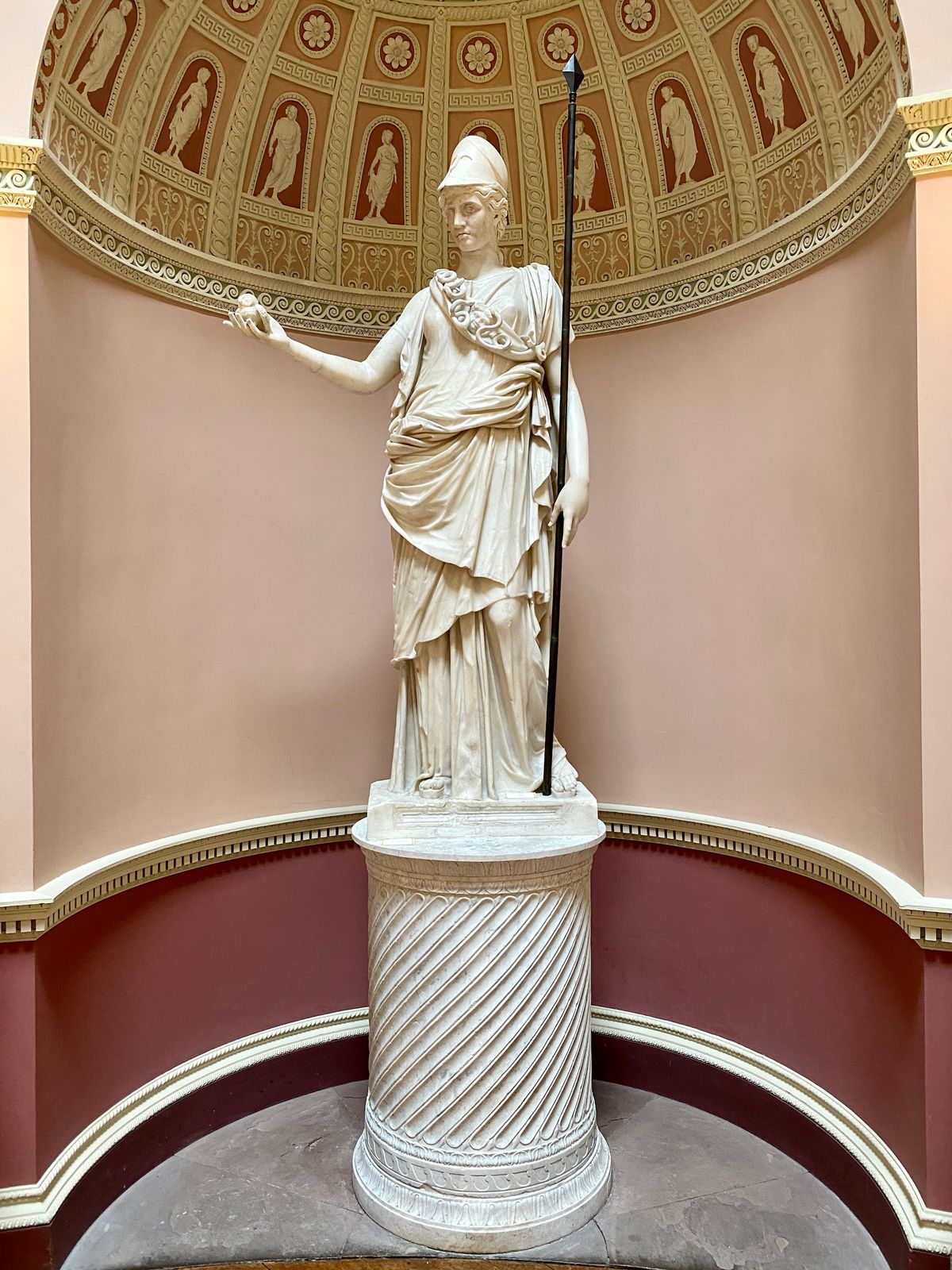The Halsted A&A Foundation has acquired a 1st-century Roman statue of the ancient Greek goddess Athena. The sculpture, which has remained out of public view for centuries, will be on display beginning 25 January at the Chicago art space Wrightwood 659.
Before it became Halsted’s in 2023, the statue belonged to the same British family for almost 260 years. The landowner and politician William Weddell originally acquired the sculpture in mid-1700s Rome for his estate in North Yorkshire, where he installed it in a custom-built gallery niche designed by the architect Robert Adam. (Weddell was an avid collector of antiquities, including the so-called Jenkins Venus.)
The Halsted curator Karen Manchester notes that the statue is an amalgam of two sculptures from different eras—the head from one made during the reign of Augustus (31BCE-14CE), and the body created under Claudius (41CE-54CE). Furthermore, “like many sculptures sold in Rome in 18th-century Italy, the figure is composed of ancient and modern fragments”, she said in a statement.
“The practice of piecing together sculptures was not invariably an attempt to deceive customers,” Manchester added. ”Rather, many buyers preferred complete pieces, even if composed of unrelated parts.” Restorers at the time often commissioned sculptors to create new parts for statues when suitable ancient fragments were unavailable. “The largest restored parts of this figure are its proper left arm and a section which extends from the jawline to the chest,” she said.
As to why the sculpture is known as Athena rather than Minerva—the ancient Roman equivalent of the Olympian—Manchester tells The Art Newspaper that it was, in fact, originally called Minerva. “In the 18th century, Athena was known among the British grand tourists as Minerva, probably because they learned Latin in school, not ancient Greek, and therefore were familiar with the Latin names of deities,” she says. “The 18th-century owner called the statue Minerva, and it was subsequently published under that name too.”
But the sculptures it is composed of were of Athena, who is easily identifiable by her accoutrements. “The head has Athena’s helmet and the torso has Athena’s aegis (sash-like device) that crosses her chest,” Manchester says. “At the time these pieces were carved, the classical style was in vogue. In other words, ancient Roman customers wanted sculptures that reflected the look of ancient Greek and Hellenistic Greek.”
The Halsted A&A Foundation collects and regularly loans its pieces to museums worldwide, and Wrightwood 659 has hosted a number of exhibitions organised by the foundation. The timing of Athena’s display comes just before the highly anticipated travelling exhibition Myth and Marble: Ancient Roman Sculpture from the Torlonia Collection opens at the Art Institute of Chicago (15 March-29 June), bringing 58 rarely exhibited ancient Roman sculptures to North America for the first time.


